

 Robert Lathan
Robert Lathan
Introduction
As multifamily homebuilders progress into the 21st century, they have looked to integrate electronics and technology to simplify and enhance their businesses. The use of programs like Yardi and MRI for both property management and accounting have become the standard. Like Moore’s Law – the observation that the number of transistors in a dense integrated circuit will double approximately every two years – the use of technology in multifamily properties must equal both the pace and demand of present and future tenants.
Young, wired professionals use the internet and other high-tech solutions to deal with a myriad of home-life challenges, from finding a new apartment to receiving information from afar about security, lighting, and whether or not heating and cooling is functioning optimally in their home. Online apps such as Apartments.com and PadMapper have proliferated, and replaced the more frustrating process of finding an apartment through print listings and phone calls. Millennial-generation renters have even gone so far as to program sensors to chart how often the temperature in their apartment changes in order to prove to incredulous landlords that the air-conditioners were not functioning properly. For those able to utilize the available computing power, technology has somewhat lessened the anxieties associated with real estate.
With current tenants demanding more use of technology within their daily life, multifamily real estate developers must either fulfill the need themselves, or miss opportunities to maximize occupancy levels and rent premiums. However, to what ends must they go to create electronic and technology-friendly communities? This article looks at the recent technology employed by Lennar in their Multifamily Division in Southern California to find out.
Real Estate Companies & Technological Development
From financial service organizations like American Express to automobile manufacturers such as Tesla, corporate strategies have increasingly revolved around technology development. For one, Tesla founder and CEO Elon Musk has spearheaded the integration of standard automobile hardware that meets the desires of the technology-oriented consumer. A 2016 software release for Tesla’s Model S and Model X vehicles indicates that the cars will feature “the ability to open your garage door, enter, park, and shut down.”
The only required human intervention will be to click a button. In the morning when one wakes up and walks out of the front door, they can simply ‘summon’ their car with another button click”1 Musk expects that within two years people will be able to call their vehicle to drive itself from their home to meet them anywhere in the country, and stop to charge itself or switch batteries along the way.
This trend of technological development geared to conveniencing consumers has arrived to multifamily real estate. Having devoted nearly a million dollars to the project, Lennar Multifamily, at the direction of California Divisional President JJ Abraham, has decided to forge ahead in developing electronic solutions for both the property owner and tenant. Lennar’s efforts have enhanced the community experience required by technology-oriented tenants while generating additional revenue sources through its proprietary STLT (pronounced “satellite”) software and fully integrated whole-home technology, Lutron.
Additionally, Lennar has created a new division: Software Engineering. Companies such as Zillow, RedFin, and Trulia have been instrumental in making data only previously available to professionals now accessible to the general public. All of these organizations currently utilize MLS data and aggregate listing sources for homebuyers and renters to search at their leisure. Lennar is taking that same model, and applying it to the luxury multifamily sector by allowing potential tenants to virtually inspect their listings, and as tenants, digitally connect in many more ways than before.
At the property-level, Lennar has launched a pilot program at their West Covina, CA location that incorporates the following features:
- STLT Leasing Wall
- Upgraded Fitness Experience
- Fully-Integrated Mobile Energy Controls
- Shared Work Space
- Location-Enabled Tenant Smart Phone Application: STLT App
1. STLT Leasing Wall
Upon entering a Lennar property, potential tenants have the ability to view all available apartments and floor plans at the selected location through a virtual leasing wall. This technology serves as an upgrade from the virtual touring software that is currently utilized by competitors such as AvalonBay. Through a 60-inch touchscreen, interested parties can see their desired apartment prior to sitting down with a leasing agent.

This desire to Do-It-Yourself (DIY) has its roots with the tastes and preferences of previous generations, but younger renters often have the mentality that technology should increase one’s ability in all interfaces of daily life. “It’s interesting to note that their Do-It-Yourself approach is technically not a totally independent endeavor, instead, because technology comes second nature to them, Millennials (prefer to extend) their technology expertise to their DIY pursuits.”2 By designing the virtual tour software with a DIY application, Lennar has focused on meeting the demands of technologically-oriented consumers. These renters desire “better, faster, more memorable service,”3 based on purchasing habits, and recent consumer trends.
2. Upgraded Fitness Experience
Lennar has also sought to enhance the apartment gym experience at its properties with electronic media. Within the standard multifamily luxury community, fitness facilities typically lack the energy and buzz of a professionally-run fitness gym. Some competitive projects have decided to play loud music and provide state of the art equipment; however, this in and of itself does not inspire tenants to utilize the facilities on a regular basis. Instead, tenants often decide to maintain their current gym membership and bypass the community gym.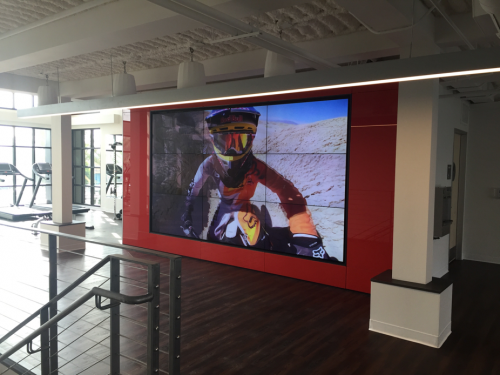
The Nielsen Les Mills Global Consumer Fitness Survey (2013) reveals that “more Millennials are now doing gym-type activities than any previous generation. Millennials make up 48% of all 18+ gym goers, while Generation X comprises 32% and Baby Boomers just 20%.” Similar to other characteristics, Millennials differ from previous generations in that they see traditional health clubs as outdated. “They want somewhere where they can show up and have someone push them hard without having to think about it – they need someone else to do the motivation work for them.” 4
With this insight in mind, Lennar designed a Motivation Wall: an 8-foot by 12-foot wall of monitors that play loops of videos displaying everything from fitness models working out to extreme athletes participating in sports such as downhill mountain biking and big wave surfing.
Moreover, tenants can find motivation and workout tips from on-call personal trainers. The technology package includes fitness professionals on video, enabling tenants to have someone push and motivate them to work hard. The amenity requires users to manipulate a touchscreen and enter in their fitness ability and desired daily workout, then a concise and intense fitness session begins.
3. Fully-Integrated Mobile Energy Controls
Lennar’s integration of technology extends to individual residences by providing energy consumption controls to the tenant, all the while creating additional lease revenue through the use of Lutron software and control systems. The Lutron technology gives tenants the ability to control everything from turning on or off the light, raising and lowering the shades, to adjusting the thermostat up or down directly via their smart device.
By enabling tenants to control both natural and LED lighting, Lennar is providing a set of eco-friendly advantages through Lutron:
Light control increases comfort and may improve productivity: Better lighting can not only reduce the energy consumption of a room, but can improve the quality of work from its occupants.
Dimmers save energy: Every dimmer automatically saves 4-9% in electricity—even at the highest lighting levels—over a standard on-off switch. A standard light switch only saves electricity in the “off” position, whereas dimmers and controls save energy 24/7.
Lutron solutions can contribute to 46 of the 110 possible points in LEED NC v4: Because of their energy saving benefits, the lighting and shading controls can contribute significantly to attaining Leadership in Energy and Environmental Design (LEED) building certification for new construction. Even though renters are unlikely to pay more for energy-efficiency, LEED status on a new building can reach a wider audience in its marketing.
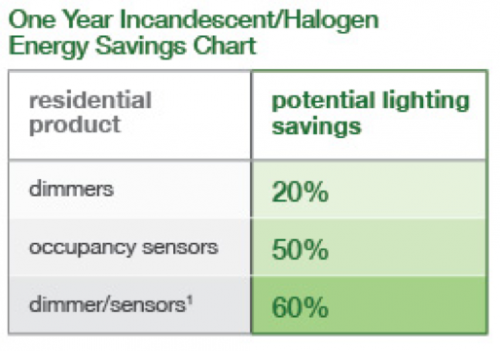 Dimmers and lighting controls can save money: Figure 4, above, shows the potential savings per each device.
Dimmers and lighting controls can save money: Figure 4, above, shows the potential savings per each device.
Shading systems can help manage heating and cooling more efficiently: Shading systems save energy and make projects more eco-friendly by harvesting daylight and reducing the demand on heating, ventilation, and air conditioning (HVAC) systems. In addition, shading systems can be made from sustainable materials.
Dimmers extend bulb life: Dimmers reduce a light’s power usage, which saves energy and can extend bulb life. Incandescent and halogen bulbs last up to 20 times longer when used with a dimmer, decreasing the maintenance cost for replacements over the life of a building. In addition, LED bulbs run cooler when dimmed, which can also extend bulb life.5
By addressing the environmental concerns of tenants, Lennar has raised its opportunity to gain brand loyalty and reduce operating expenses. In addition, by enabling tenants to control their lighting and shading systems remotely, Lennar gives tenants more convenient control of their space as a built-in amenity.
The strategy also incorporates a way to pay for itself, and then some. By setting base asking rents for properties still under construction ranging from ~$1,700 to ~$1,900 on 1-bedrooms and ~$2,000 to ~$2,500 on 2-bedrooms based on floor and location, Lennar has opened the opportunity for its product mix to be individually upgraded. If the tenant choses to only have the master bedroom installed with Lutron, then Lennar has the opportunity to gain an additional $600 over the life of a 1-year lease. However, if a tenant decides to have the entire ‘suite’ wired with Lutron, Lennar stands to gain an additional $1800 in rent per year. The rent premium is aimed at paying for the upgraded systems in a relatively short amount of time, but since the payment is stretched over the course of a full year lease, the upgrades are essentially financed through lease payments from the tenant.
The ability to charge a premium on rent through the lighting and control upgrades pushes the rental yields to levels above that of a market competitor. A competitive project in Glendora (5 miles northeast) asks for similar premium rents on 1 and 2-bedrooms, however, upgraded lighting and control systems are not present.
4. Shared Work Space
Although far from a new concept, shared work spaces in multifamily buildings are becoming ever more common now that increasing numbers of workers telecommute, and have the flexibility and the desire to work remotely. Shared work space has come of age in the multifamily sector.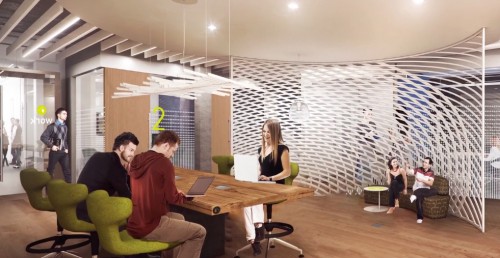
While not purely a technological amenity, Lennar has discovered that incorporating Wi-Fi-enabled shared work space on new projects is an attractive amenity for driving leasing activity. According to Deskmag’s annual Global Coworking6 Survey, 71% of participants reported a boost in creativity since joining a coworking space, while 62% said that their standard of work had improved. The study also found that half of all coworkers access their workspace around the clock—with only 30% preferring to work during regular business hours.
“The future of work should not be dictated by space or place, but by the individual and the tasks that he or she has to deliver,” Regus CEO Mark Dixon tells Fast Company. “Many employees are now measured by output and productivity, and not just 40 hours spent sitting at a desk. Workers and the companies for which they work are increasingly beginning to realize that they need to provide and utilize a wide range of workplaces to accommodate an increasingly diverse workforce with very different expectations of what work is, and where and when it should happen,” he explains.7
Looking again at the needs of multifamily tenants, Lennar provided a shared opportunity for residents that provide an additional stream of compensation for the property owner, and an attractive offering on-site. If needed, residents can rent office space located on the ground floor of the community on an hourly basis using their smart device application, developed under the STLT system.
Further, Lennar has initiated the opportunity for cross-location business. Each resident receives a FOB key (wireless access keychain) and smart device application that allows them to request an office at any Lennar location featuring shared workspaces. For instance, if a resident travels from Southern California to San Francisco, they do not have to find a local coffee shop or some other space to meet with clients or business associates, but can simply reserve office space at a local Lennar property via their smart device. With this and the other previously mentioned innovations, Lennar has taken concrete steps toward better satisfying the needs of the growing and demanding Millennial renter population, catering to how the demographic values community, and its ability to interact in concert with others.
5. Location-Enabled Tenant Smart Phone Application: STLT App
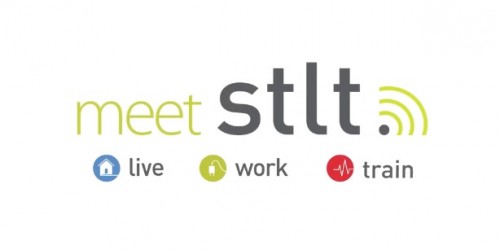
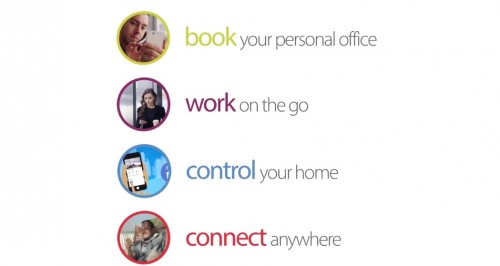 Lennar Multifamily has moved the needle forward via the proprietary STLT software technology and Lutron integrated homes by arranging multifamily developments akin to social networks. By taking the time to initiate a Software Engineering Division, Lennar has taken the crucial step to directly cater to the newer generation of renters. Within the ideation, development, and creation of the technology, Lennar has opened the door to additional opportunities beyond reduced vacancy and brand loyalty. In addition, the STLT software has the possibility of being monetized outside of Lennar Multifamily Communities, and sold as a package or licensed to other developers, owners, retailers, and vendors as an integrated communication and delivery system. With mobile-enabled software provided to tenants, local retailers have the ability to exclusively market to residents.
Lennar Multifamily has moved the needle forward via the proprietary STLT software technology and Lutron integrated homes by arranging multifamily developments akin to social networks. By taking the time to initiate a Software Engineering Division, Lennar has taken the crucial step to directly cater to the newer generation of renters. Within the ideation, development, and creation of the technology, Lennar has opened the door to additional opportunities beyond reduced vacancy and brand loyalty. In addition, the STLT software has the possibility of being monetized outside of Lennar Multifamily Communities, and sold as a package or licensed to other developers, owners, retailers, and vendors as an integrated communication and delivery system. With mobile-enabled software provided to tenants, local retailers have the ability to exclusively market to residents.
Retailers may be willing to invest in, and have the right to send notifications of sales and exclusive opportunities to Lennar Multifamily tenants. After securing contracts with retailers around the country, the STLT software may be able to provide important tenant purchasing capabilities, and also integrate with property management teams for package receiving. As the software catches-on, Lennar will be able to license or sell the software to multifamily developers and owners looking to deploy similar capabilities for their tenants, but lack the in-house software development team to deploy. Through cultivating an in-house technology team, Lennar Multifamily may even spin-off the Software Engineering Division as a technology company in its own right.
Conclusion
Through Lennar’s rollout of the STLT Leasing Wall, new Fitness Experience, Mobile Energy Controls, Shared Work Space, and STLT App, the company is charting a more digital and connected course in the multifamily sector. The pilot program will allow Lennar to assess each aspect of the new program and service offering to tenants in order to identify which to extend to existing or new properties. Perhaps the boldest direction is the STLT app. As multifamily operators become part of the consumer’s digital ecosystem, it may indeed become common for prospective and current tenants to demand the flexibility and connectivity offered through a sophisticated digital platform such as STLT. One thing is for certain: the market for higher-end technological amenities in multifamily projects is here to stay.
The multifamily sector has seen dramatic changes over the past few decades, and if the current trends are any indication of the future, it’s clear that the service offerings of connectivity and flexibility through technology will only continue to develop. Multifamily customers often exhibit the same needs and desires of homeowners, and if the sector can continue to deliver improvements that bridge the gap, the value proposition of renting versus owning increases. Technology has, and will continue to play in a large part of those gains.
(Endnotes)
1 Kharpal, Arjun, “Telsa cars can now park themselves in your garage,” http://www.cnbc.com/2016/01/11/tesla-cars-can-now-park-themselves-after-software-update-summon-detroit-auto-show.html, January 11, 2016.
2 Ashish Arora, Cricut, “The millennial marriage of tech & DIY,” https://gigaom.com/2013/11/02/the-millennial-marriage-of-tech-diy/, November 2, 2013.
3 Donnelly, Christopher & Scaff, Renato, “Who are the Millennial shoppers? And what do they really want,” https://www.accenture.com/us-en/insight-outlook-who-are-millennial-shoppers-what-do-they-really-want-retail.aspx, 2016.
4 Rein, Jocelyn, “Traditional Fitness Industry Missing Out On Millennial Market,” http://www.lesmills.com/us/knowledge/media-center/traditional-fitness-industry-missing-out-on-now-dominant-millennial-market/, March 2, 2016.
5 Lutron Electronics ©, “Light Control Education,” http://www.lutron.com/en-US/Education-Training/Pages/LCE/GreenBenefits.aspx, 2016.
6 Deskmag, “1st Results of the 3rd Global Coworking Survey,” http://www.deskmag.com/en/1st-results-of-the-3rd-global-coworking-survey-2012, November 9, 2012.
7 Dishman, Lydia, “The Future of Coworking And Why It Will Give Your Business A Huge Edge,” http://www.fastcompany.com/3004788/future-coworking-and-why-it-will-give-your-business-huge-edge, January 15, 2013.
